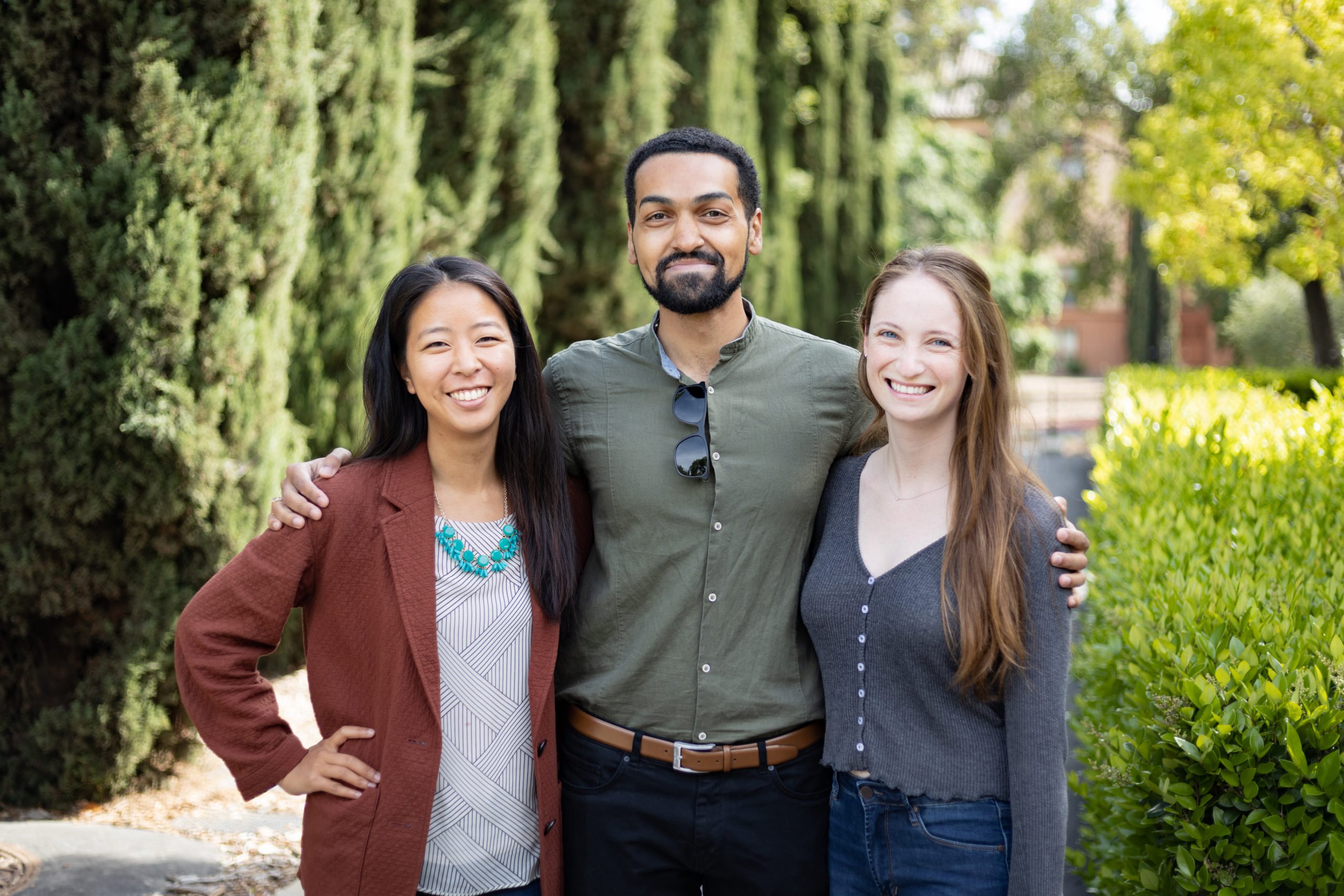Stella Liu MBA ’22, Joseff Kolman MBA ’23 and Georgia Kossoff MBA ’23 started The Gigaton, a newsletter aimed at inspiring young professionals to use their 80,000 hours — the average amount of time a person works in their lifetime — to tackle climate change. The bi-weekly newsletter is divided into two parts: identifying the most promising climate solutions based on Project Drawdown’s quantified carbon emission potential and directing readers to key stakeholder companies involved in developing the solutions.
The graduate students leading the project bring their personal and professional backgrounds, which lie at the intersection of sustainability and business, to the informational Substack.
Liu worked at Arborview Capital and the Stanford Impact Fund with a focus on environmental sustainability during her time at Stanford’s Graduate School of Business (GSB). Before attending business school, Liu launched the software behind Indigo Agriculture’s soil carbon credit program, spearheaded a new AI solution at IBM Watson IoT and researched vertical farming on the Fulbright to Singapore.
Kossoff’s upcoming Gigaton article is focused on plant-based food, an area she is personally passionate about. Her consultancy career started at Bain & Company and gave her the tools to conduct pro bono cases for environmental nonprofits and social enterprises outside of work.
During his time at MIT, Kolman represented the university as a delegate at the United Nations Framework Convention on Climate Change’s Conference of Parties in Paris. Before coming to Stanford, he worked at CustomerFirst Renewables, a small renewable energy consulting company, where his interest shifted to climate investing as means of scalable impact.
The Daily sat down with Liu, Kossoff and Kolman to discuss The Gigaton and their hopes for the future.
This interview has been lightly edited for clarity.
The Stanford Daily [TSD]: What inspired the team to start The Gigaton? How did the team come together?
Stella Liu [SL]: I just posted on Slack and our sustainability channel saying, “Hey, I’m really interested in starting a newsletter on climate.” That’s when we all met together and found a common theme in sustainability. Climate change is a huge problem. However, we felt like there was a gap in determining what areas actually have the greatest impact.
Joseff Kolman [JK]: One other aspect that brought us all together was writing with the knowledge that we have from our different experiences or from the classes that we’re taking. It’s not just being able to have that information in hand and then going to work one specific job that allows us to use it. It is also being able to take that breadth of our experience or understanding about climate and put it into writing, getting practice for some of us in writing, as an efficient means of being able to disseminate those thoughts.
Georgia Kossoff [GK]: There are obviously so many ways that you can tackle the climate issues facing our world, but I think that one of the most impactful ways is education. This felt like a way that you could potentially magnify your impact by directing these incredible students towards the solutions that are actually going to move the needle most.
TSD: The first few issues of the newsletter address issues spanning from hydrogen, food waste, onshore wind, electrical vehicles and refrigerants. What can subscribers expect from future issues?
JK: We’ve got a number of authors already interested and currently writing articles for it, so we’ve got a nice pipeline of stuff coming up to continue broadening the suite of industry areas that, you know, really do have an impact on climate, and we’re getting more and more people to write about them.
SL: If they have expertise in a specific climate solution and want to write about it, they are welcome to share their knowledge more broadly.
TSD: The Gigaton seems to be focused on start-ups and industries. Why are the writers more interested in the industry as compared with scientific research or policy solutions?
SL: We use Project Drawdown as our anchor point covering the solutions. But then if you wanted to go and work on these solutions, there aren’t really next steps embedded into it. We felt that by focusing on business, a lot more roles like marketing, finance and sales are available for different people, so we thought that could be a great way for us to have an impact.
GK: Our goal with this is to make it actionable for students so that they read each article and understand the range of ways that they can get involved. Our goal is to lay out the landscape with policy being one of those aspects.
TSD: What did you learn from working on The Gigaton?
GK: I was very pleasantly surprised at all of the responses to our first article. I think the format and the way that we structured the insights really resonated with a lot of people that were interested in climate and had seen so much literature on it. For many people, The Gigaton is one of the first times that they saw information about solutions to climate change and key private stakeholders in the space laid out in this way and how you could get involved in a direct manner.
SL: It was really inspiring to know that there were other people in the class who were just as passionate about climate and just being part of that team was really, really nice.
